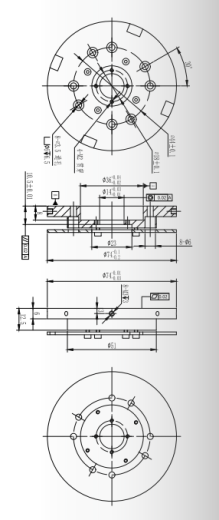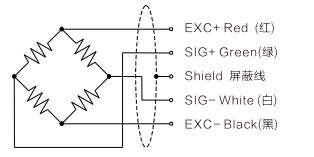Characteristics and applications
Torque sensor resistance principle
The torque sensor resistance principle is used to measure torque and force in both directions, with good linearity and negligible hysteresis. These sensors allow for torque measurements as small as 0.1Nm and as high as 1000Nm.
They are widely used in robots for ideal automation solutions such as loading and unloading parts in machining centers, presses, measurement stations, etc. They provide convenience, accuracy, repeatability, and reliability!

Rated range | Nominal (rated) torque Mnom | 60N.m |
Output sensitivity | Nominal (rated) sensitivity | 0.075~3.925mVN |
| Nonlinearity | Non-linearity | 1.0%F.S. |
| Hysteresis | Hysteresis | 1.0%F.S. |
| Repeatability | Repeatability | 1.0%F.S. |
| Creep (30 minutes) | Creep(5min) | 1.0%F.S. |
| Temperature coefficient of sensitivity drift | Temp.effect on output | 0.05%F.S./10℃ |
| Temperature coefficient of zero drift | Temp.effect on zero | 0.05%F.S./10℃ |
Insulation resistance | Insulation | ≥5000MΩ/100VDC |
Excitation voltage | Recommended excitation | 5V |
Temperature compensation range | Compensated temp range | -10~40℃ |
Operating temperature range | Operation temp range | -10-60℃ |
Safe overload | Safe overload | 120%F.S. |
Ultimate overload | Ultimate overload | 150%F.S. |
Protection level | Protection class | IP64 |
Wiring diagram |
 |